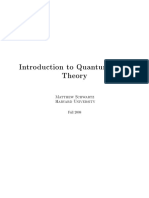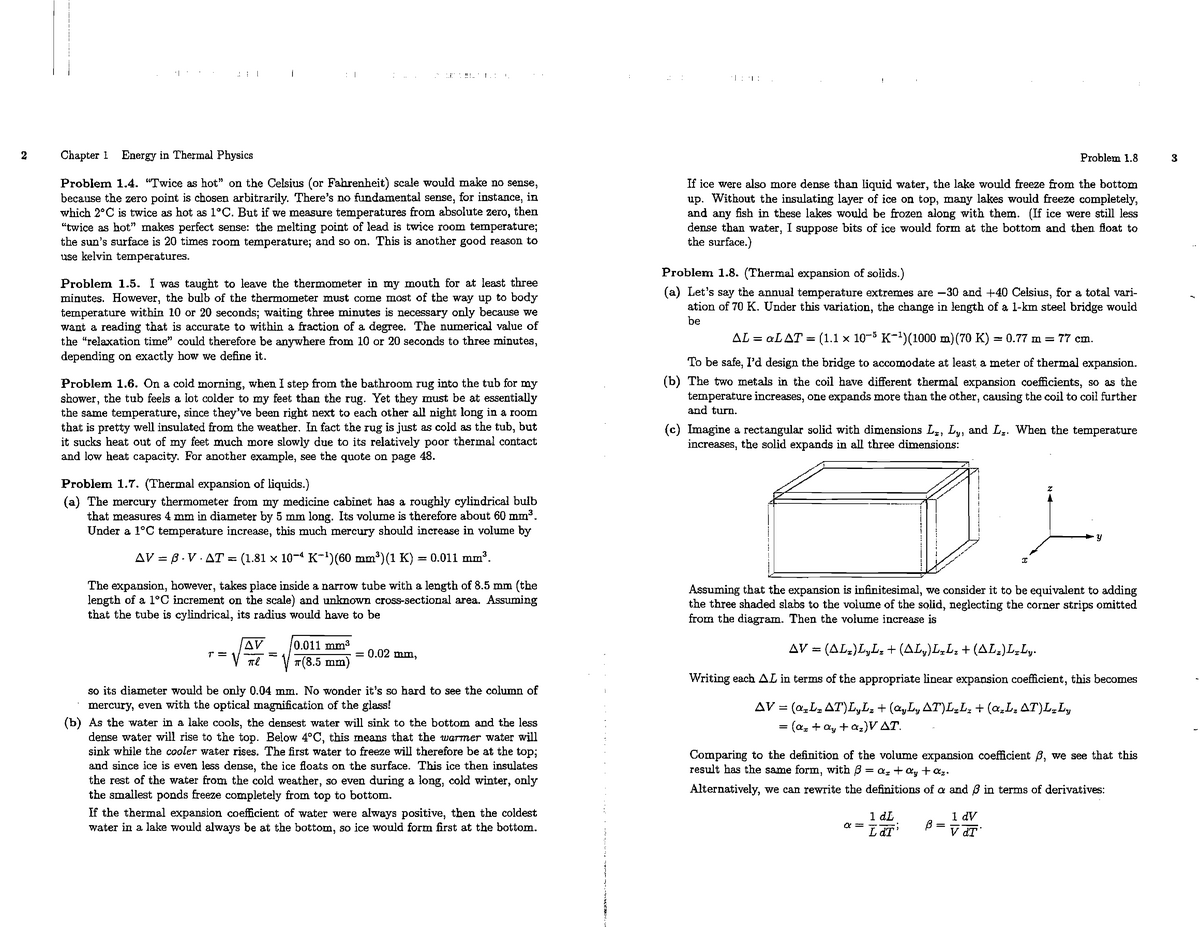

d) For the unoccupied state: U = S = N = 0⇒ Φ = 0. c) Φ = U − TS − µN = U − TS + PV − PV − µN = G− PV − µN = −PV, where we in the last step use that G = µN when T and P are constant (from the thermodynamic identity of G, dG = −SdT +V dP +µdN with dN = 1). The tendency of the total entropy to increase therefore means that the grand free energy tends to decrease (since dStotal is positive, dΦ must be negative in order to make −dΦ/T positive). The total entropy of the system plus reservoir (expressed in terms of system variables) is then dStotal = − 1 T (dU − TdS − µdN) = − 1 T dΦ. Assuming V fixed, apply the thermodynamic identity to dSR (solve the ex- pression for dUR in terms of dSR), and use the fact that dUR = −dU and dNR = −dN to write dSR in terms of system variables. b) As was done for F and G in chapter 5.2 in Schroeder, express an infinitesimal change in the total entropy Stotal as a sum of changes in the entropy S of the 1 system and the entropy SR of the reservoir it is in contact with: dStotal = dS + dSR. T, V or µ is obtained by holding the two other quantities fixed:( ∂Φ ∂T ) V,µ = −S, ( ∂Φ ∂V ) T,µ = −P, ( ∂Φ ∂µ ) T,V = −N.
Inserting the thermodynamic identity for dU gives dΦ = −PdV − SdT −Ndµ. These results indicate a fundamental difference in the scaling of static and dynamic properties of rings and linear chains in the thermal crossover regime.Download Schroeder Solutions for Introduction to Thermal Physics and more Thermal Physics Exercises in PDF only on Docsity!Solutions to exercises week 45 FYS2160 Kristian Bjørke, Knut Oddvar Høie Vadla NovemSchroeder 5.23 a) Writing Φ = U −TS−µN in terms of infinitesimal changes of the quantities involved: dΦ = dU − TdS − SdT − µdN −Ndµ. Additionally, the ratio of the mean stretch along the x-axis to the hydrodynamic radius, ( X / R H ), is found to be independent of z for polymeric rings, unlike in the case for linear polymers.

The ratio U RD for dilute ring polymer solutions is found to converge asymptotically to a constant value as z → ∞, which is a major difference from the behavior of solutions of linear chains, where no such asymptotic limit exists.

The universal ratio U RD of the radius of gyration R g to the hydrodynamic radius R H is determined, and a comparative study of the swelling ratio α g of the radius of gyration, the swelling ratio α H of the hydrodynamic radius, and the swelling ratio α X of the mean polymer stretch X along the x-axis, for linear and ring polymers, is carried out. The universality of their static and dynamic properties, as a function of solvent quality z in the thermal crossover regime between θ and athermal solvents, is studied here using Brownian dynamics simulations. Due to their unique topology of having no chain ends, dilute solutions of ring polymers exhibit behavior distinct from their linear chain counterparts.


 0 kommentar(er)
0 kommentar(er)
